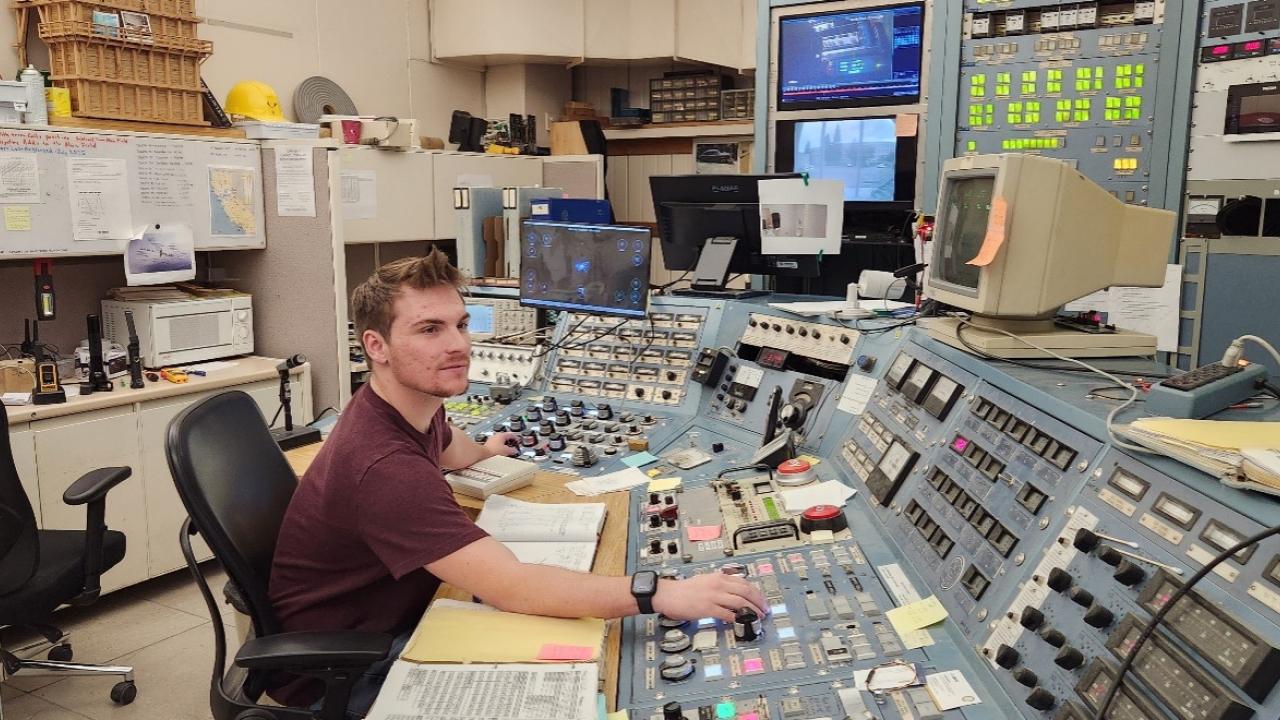
Crocker NL Analyzes Samples from the 2025 LA Fires
Scientists from Crocker NL responded to the urban wildfires in Los Angeles, providing important information for understanding toxins from burned structures.
Read the article in Inside Climate News!
On January 7, 2025, wildfires erupted in Los Angeles, California. By January 14, with the help of colleagues, his family, and community partners, Dr. Nicholas Spada prepared and deployed four instruments to collect airborne smoke and ash while the fires were still burning. The following weekend, Dr. Ira Leifer of Bubbleology Research International arrived in LA with his fully-outfitted SISTER2 (Standard Instrumentation Suite: Truck Enabled for Response), which measures 14 gases, meteorology, particle size distributions, vertical optical depth, and ionizing radiation at up to highway speeds while displaying these data in real time to guide targeted air sample and aerosol sample collections.
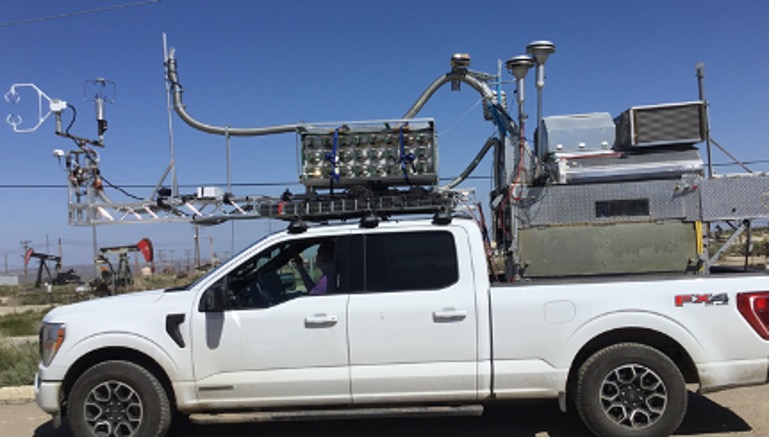
With access into the evacuation areas and permissions granted by homeowners arranged by Melissa Bumstead and Jeni Knack of Parents Against Santa Susana Field Lab (PASSFL), the team of researchers and community volunteers (Leifer, Alcantar, Bumstead, and Knack) collected ash samples from specific sources (gas-powered and electric cars, homes, garages, roadways, etc.) under the direction of Prof. Mohammed Baalousha, an expert in wildland-urban interface fires and speciation methodology. The team wore a personal air sampler to identify and quantify any toxic aerosols during collection, helping understand what the exposure risks would be for anyone going into a burn area for cleanup. The backpack sampler was urgently prepared by Rebecca Moran and Debbie Bennett, one of Spada’s mentors in the UCD Environmental Health Science Center.
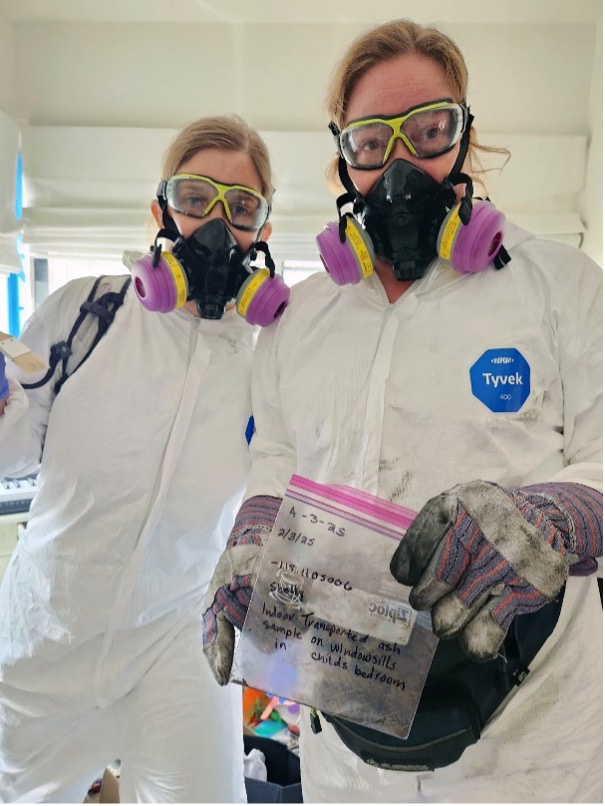
Melissa Bumstead (left) and Jeni Knack (right) hold one of the labeled ash samples collected from a residence in Altadena, California. Credit Shelly Magier
Once the samples were collected, it would take months to analyze them and process the results. Here at Crocker, the trace elements beamline had been dismantled for hardware upgrades. When reassembled, the X-ray detector’s thermo-electric cooling was dead. After desperate attempts were made to “hot rod” the detector with water cooling, fans, and a Bernoulli cooler, simultaneously, a new detector was ordered and new parts were machined in the Crocker NL machine shop.
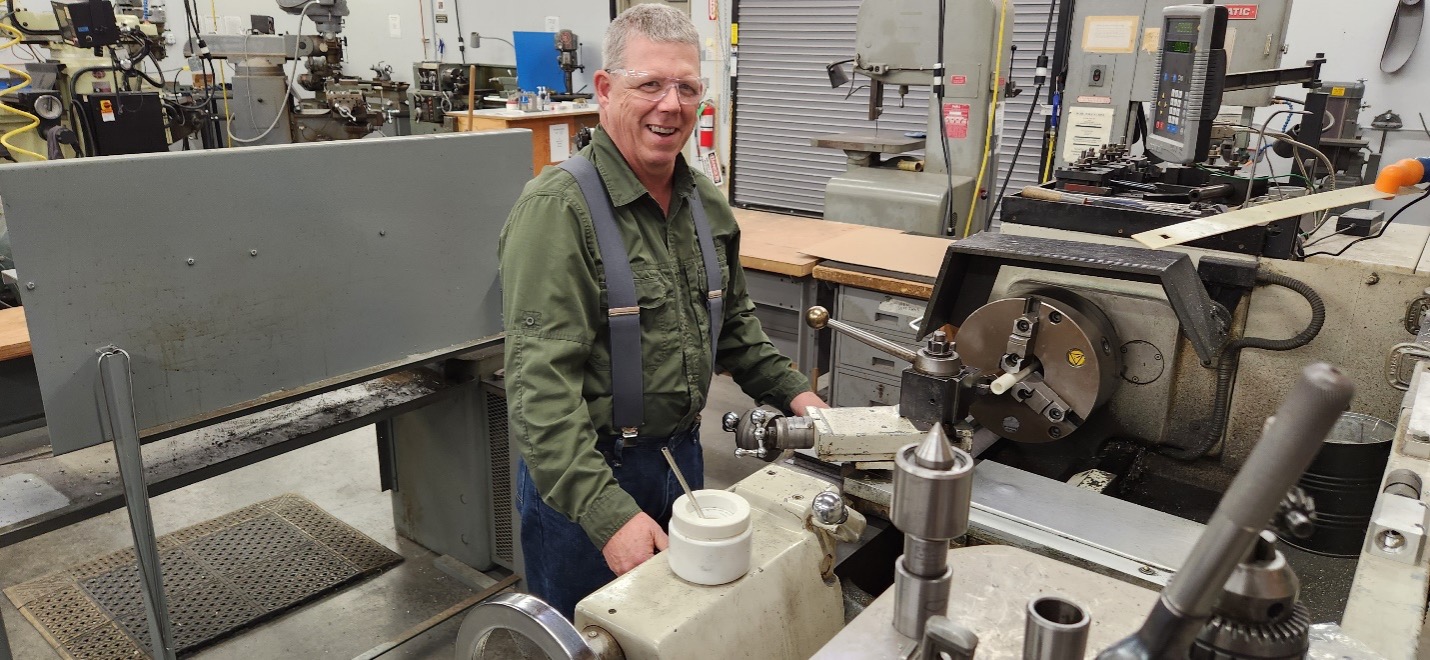
Gary Faulk fabricated the urgently needed parts to couple the new X-ray detector with the Trace Elements end-station on Beamline 1B.
The DRUM samplers used by Spada collected approximately 11,520 samples during the one month deployment from January 13 to February 10. With each Ion Beam Analysis (IBA) requiring 20-40 seconds each, analysis of all samples is prohibitively expensive. Therefore, the first week of samples at all sites (Pasadena, Santa Monica, Hollywood, and West Hills) were analyzed thanks to a RAPID grant from the National Science Foundation (#2521485), with subsequent synchrotron-induced X-ray fluorescence analysis of all samples to take place at the Stanford Synchrotron Radiation Lightsource. The IBA analyses were conducted on three separate days, each requiring the cyclotron operators to run the beam for around 12 hours each time. Without their willingness to run the beam late into the night, the results would have been further delayed, possibly for months due to the high demand from outside users.
Side note: for the full and accurate timeline of our cyclotron, visit https://crocker.ucdavis.edu/historical-highlights.
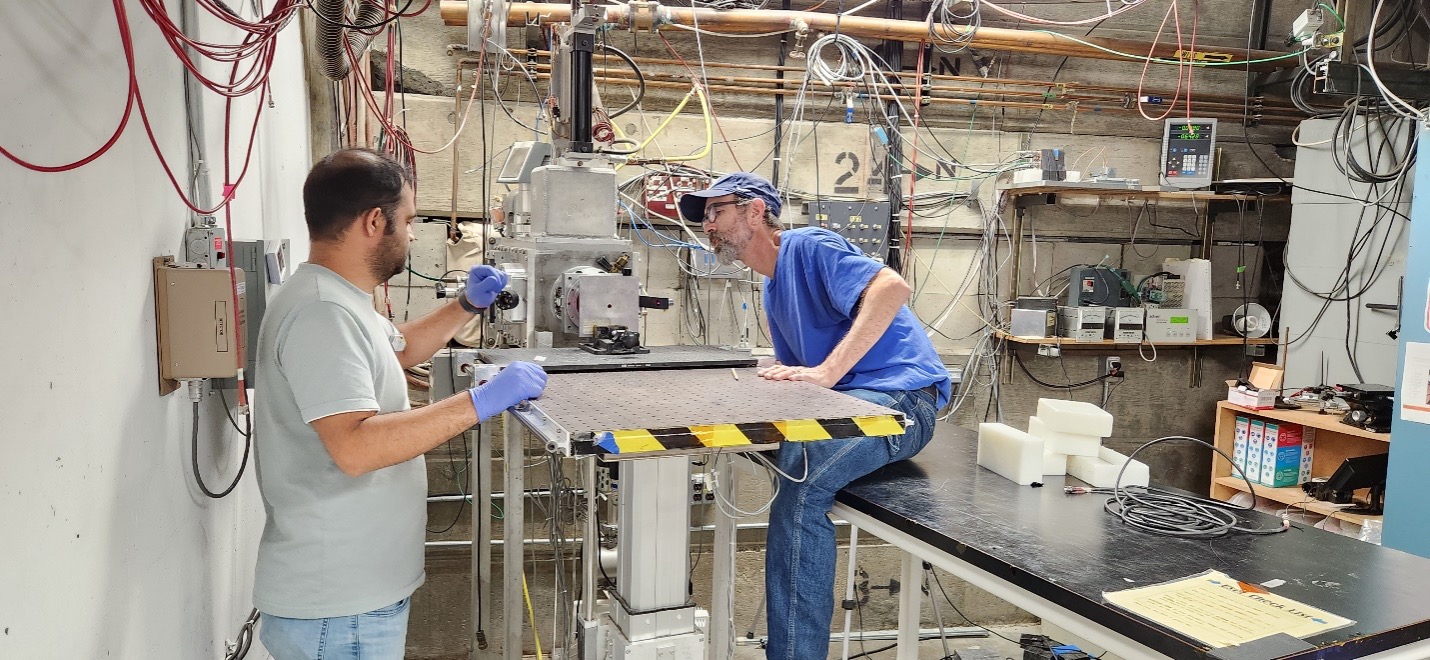
Rafi Sahebzada (left) and Michael Backfish (right) perform quality control checks on beamline 2.
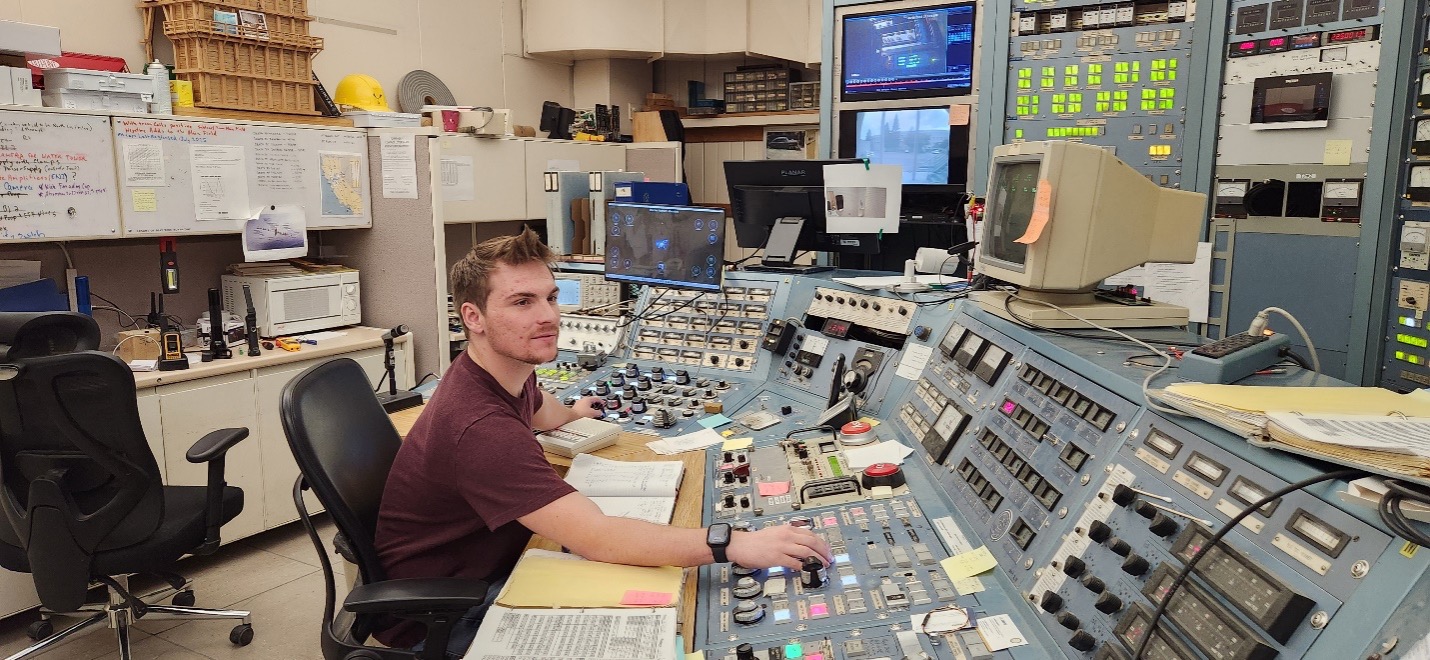
Matthew Novotny operates the cyclotron from the control room. The original analog controls are still in use alongside modern digital monitoring systems developed by Claudio Osses.
Preliminary results show elevated metals while the fires were burning primarily in particles below one micrometer, with a slow decline to background levels after the fires were extinguished. Data reduction and analysis is still on-going, but this unique data set will contribute to the extensive collection efforts of all the researchers that responded to the LA fire disaster.
